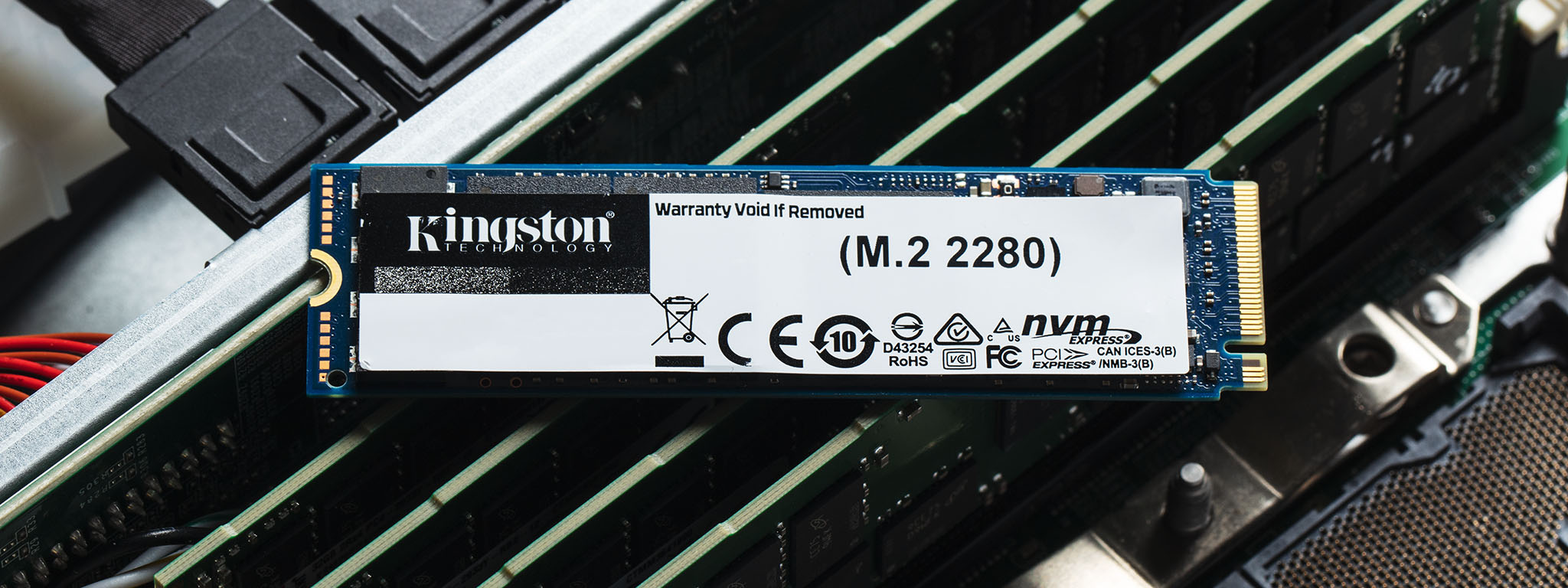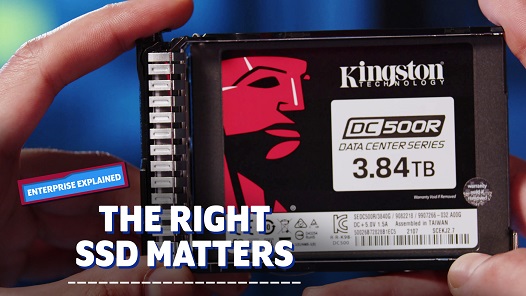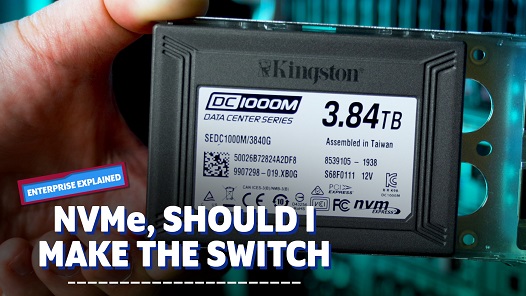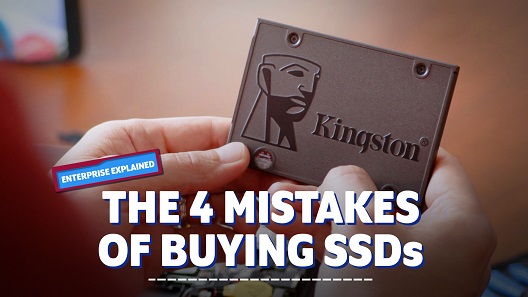Ask a Server SSD Expert
Planning the right solution requires an understanding of your project’s security goals. Let Kingston’s experts guide you.

For the last five years, server and hardware configurations have been consistent. Whether in an application server, storage array or SaaS backend, how data centre managers have built their systems hasn’t changed much. Even with the need to increase the use of edge computing closer to the customer – both for compute and storage – most edge networks mirror existing hardware configurations using SAS or SATA SSDs.
Only in rare instances, where meeting five or six-nine SLAs for mission-critical applications is a must, have we seen dramatic changes in hardware configurations. In these data centres, redundancy is key, and many data centres manage their storage platform by predominantly switching to NVME with enterprise-grade SSDs. NVMe drives are also equipped with large DRAM caches to deliver QoS performance (long-term performance stability).
The answer is far more complex than a simple yes or no, and actually raises a host of other questions.
Upgrading a simple 1U server or 10U rack from SATA or SAS is limited by the availability of connections. Most systems that implement SATA or SAS SSDs connect using hardware-based RAID controllers. But NVMe utilises the PCI-Express ports, which inherently provide faster transfer speeds, and then leverages software-defined RAID profiles.
Just a year ago, most customers were locked on SATA with no plans to move to NVMe. Even the largest tier 1 providers haven’t completely made the switch, having a 50/50 per cent mix of SATA and NVMe. That’s because NVMe requires more of a technical overhaul.
Not all existing servers have enough PCIe ports to support a large NVMe deployment, and most data centres don’t change their servers as fast as they change their storage arrays. Simply put, if it’s working and providing the amount of performance needed for today’s operations, is there a need to switch?
If so, here are some things to consider for the next build:
Switching to a Software-Defined Storage (SDS) model presents the user with a new way of managing redundancy and controlling physical devices. In some cases, moving from a hardware-controlled storage system to SDS may require certain applications to change down to the kernel level to maintain consistent performance. Furthermore, SDS platforms require users to think differently about how they deploy and configure their storage for redundancy and performance.
Some issues may not be a data transfer issue, but relate more to a read/write profile or simply not using enterprise-grade drives. Many drives today have high-performance specifications on their data sheets but don’t address long-term consistency or predictability of performance. That’s usually because they tout peak-performance capabilities rather than steady-state performance profiles.
The largest barrier is the upfront cost. While the price of flash storage is reaching parity when comparing SATA and NVMe, the required hardware changes deliver greater upfront costs when making the switch. As previously mentioned, not all servers are equipped to create large NVMe deployments and switching completely requires new backplanes and motherboards.
For service providers meeting certain SLAs, there is a real need to switch if the entire network requires equal performance. Some customers may be content with their existing service levels and application support – and if covering the cost of an overhaul is passed onto the customer, some might balk at the price increases.
However, for service providers that deliver tiered application support, it might be worthwhile creating entirely new systems that are based on NVMe. In reality, workloads haven’t changed, but even with new customers services can be tiered by high-performance and availability. Content-driven customers could now host services and applications they couldn’t in the past but are now made possible with NVMe deployments.
While it’s always nice to have the new and shiny upgrades to our servers and provide competitive differentiation from other data centres, the fact is there are a lot of advancements that could even be pushing different considerations for new builds.
Today’s M.2 NVMe drives aren’t typically hot-pluggable, nor is there an attachment for a carrier case or bracket. SATA has remained a dominant form factor as bad drives could be swapped out without powering down an entire server. This is where the U.2 form factor comes in as it allows NVMe in the data centre that is hot pluggable in front-loading server bays, provided there is both host and OS support. While U.2 looks to be the mainstream form factor to enable NVMe in servers, recent developments from Intel and Samsung regarding form factor are creating more possibilities for NVMe builds. Intel’s EDSFF (ruler) and Samsung’s NF1 may solve some of the shortcomings of the M.2 form factor.
Both these form factors are new enough that we don’t have enough data on long-term performance and reliability. However, like U.2, they do address real serviceability concerns for building the next NVMe systems. Much like the Betamax vs. VHS debate in the 80s and 90s, the question will then be about which form factor will eventually win out for long-term support.
Whether ready to make the switch or not, Kingston continues to provide the most consistent enterprise-grade SATA SSDs to support the majority of data center installations while also developing a suite of enterprise NVMe solutions.
#KingstonIsWithYou

Planning the right solution requires an understanding of your project’s security goals. Let Kingston’s experts guide you.

Choosing the right SSD is important since not all SSDs are alike. When it comes to data centres, choosing an SSD with the right performance consistency with low latencies that’s specifically built for enterprise and data centre workloads is key for consistent and reliable performance.

Cameron Crandall of Kingston helps you decide if you should move to your server storage to NVMe SSDs.

SSDs are all alike, right? You plug it in and instantly have all of that Flash Memory available for your workload? Right? If you answered yes, then you’ve probably fallen to one of the 4 biggest mistakes you could make when selecting your SSD.

Some enterprises still make use of client SSDs to handle high-intensity server tasks, then rip and replace them when they fail to maintain the required standard of performance. Learn why that’s a false economy and how enterprise-level drives can increase organisational efficiency.